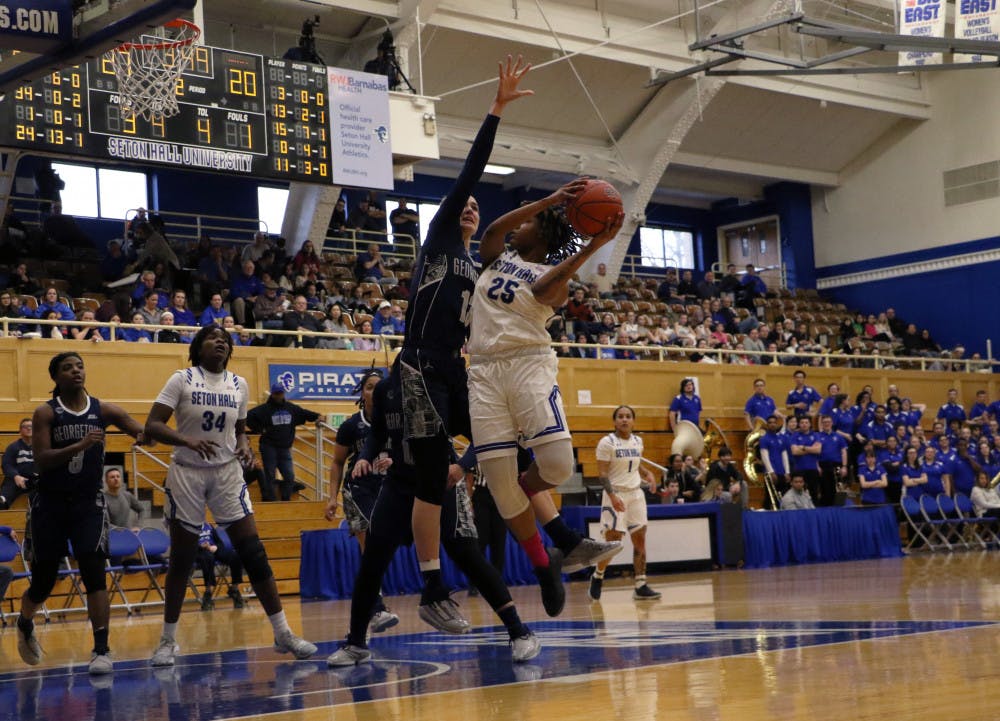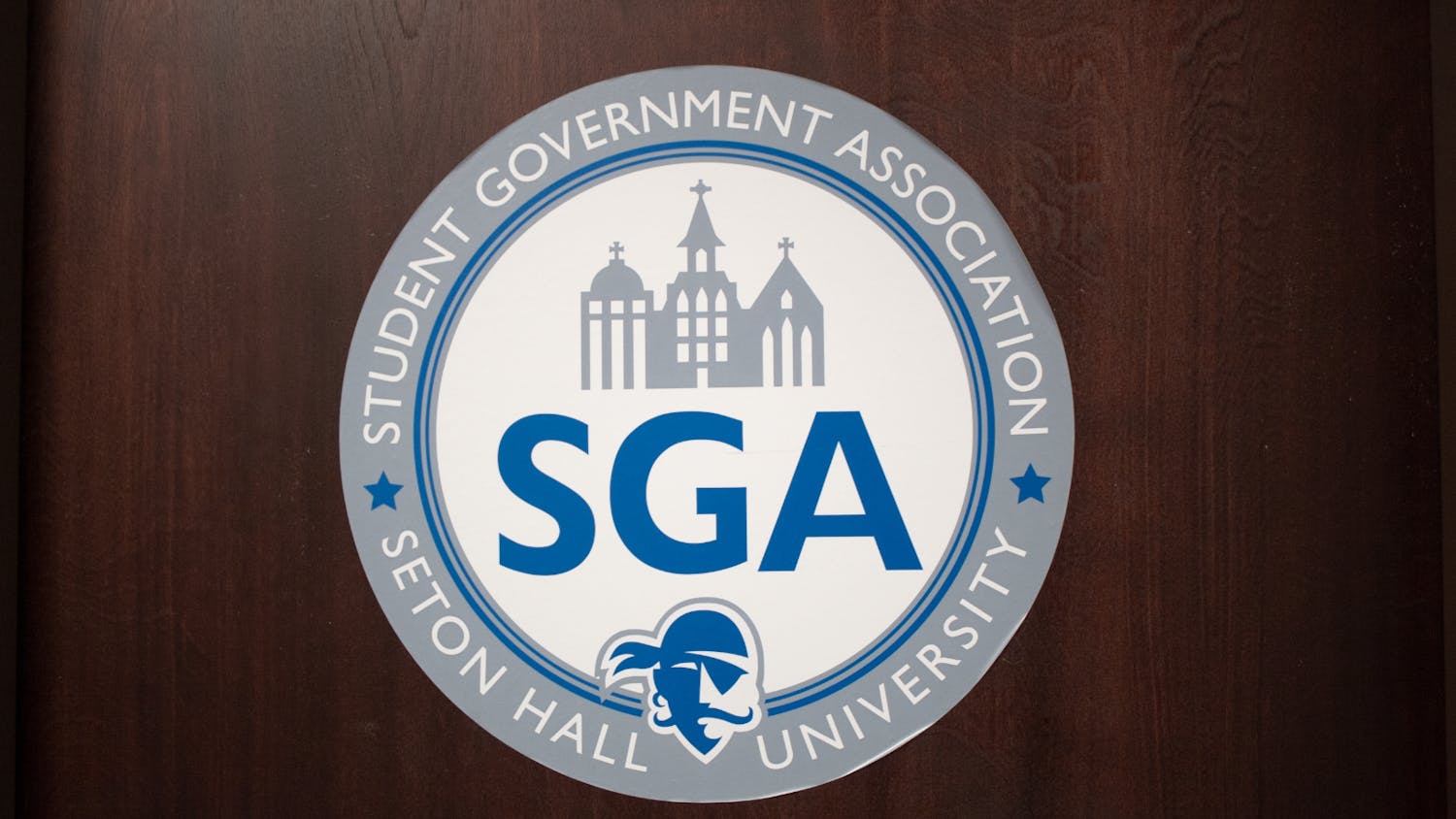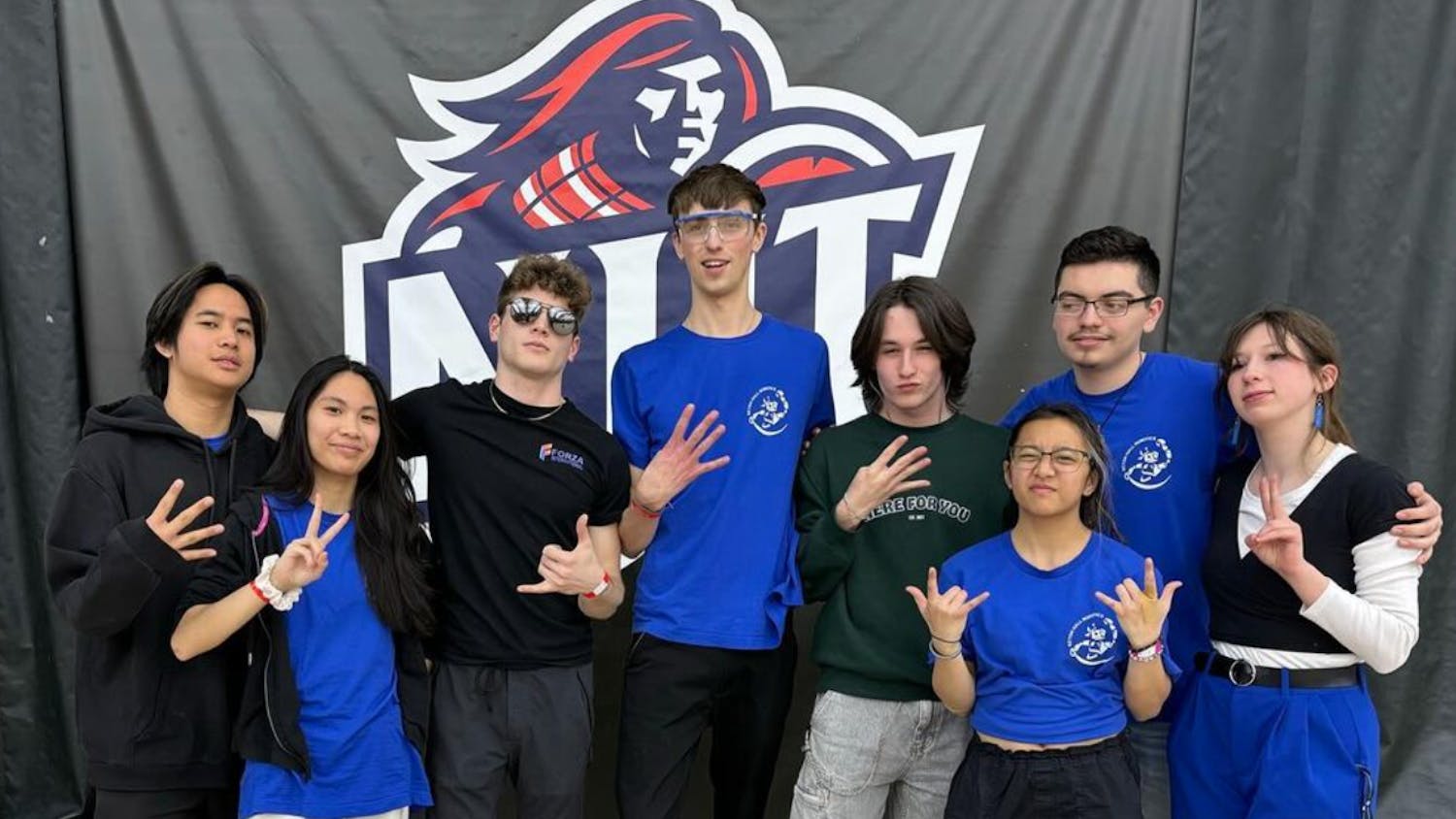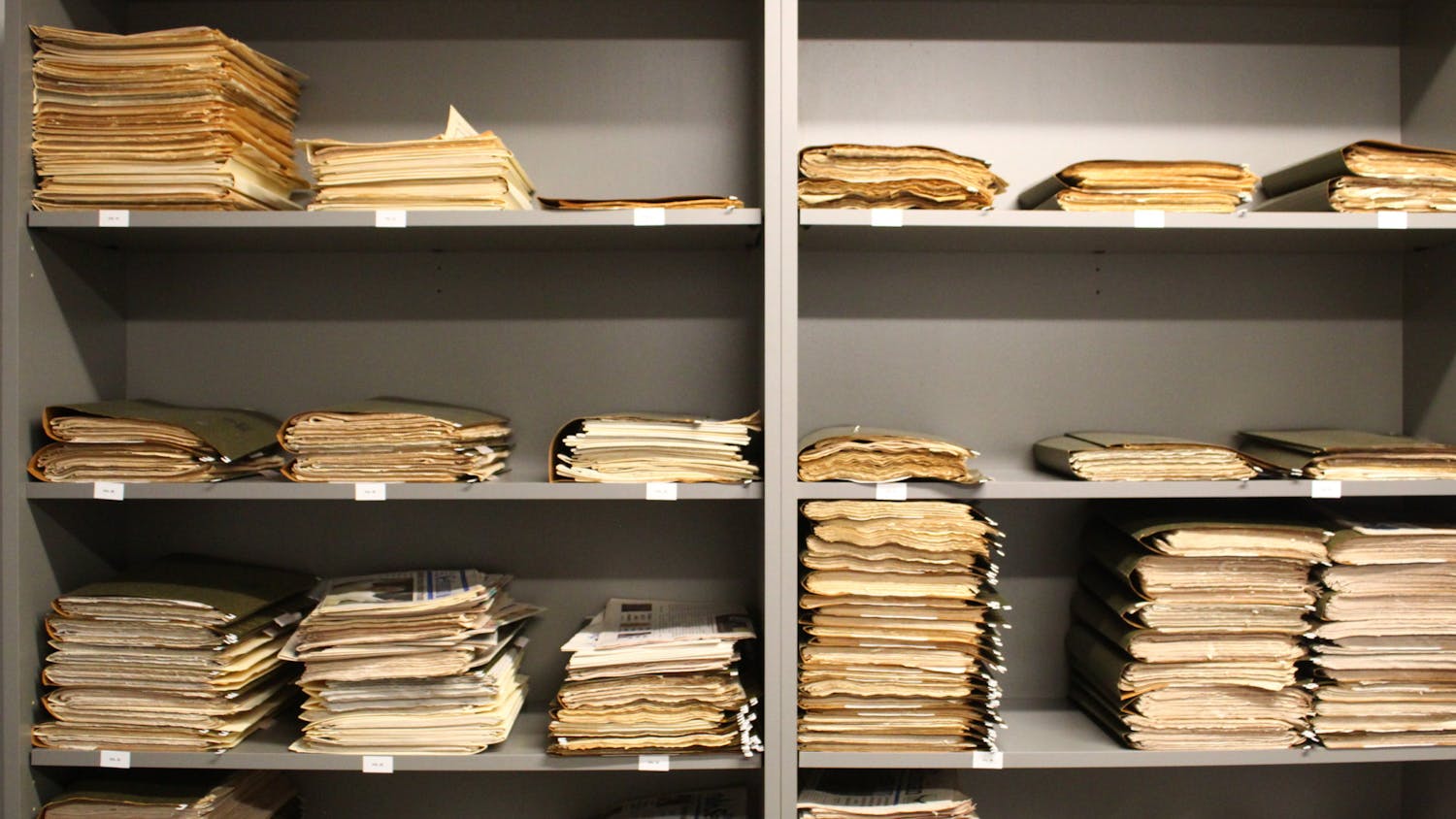The SHUcycle Christmas Tree Project unveiled its recycled Christmas tree on Dec. 3 at the annual Christmas tree lighting.
The tree is an attempt to bring attention to proper recycling on campus. Students are encouraged to add plastic water bottles to empty spaces in the tree’s mesh. The tree’s foundation is made of bamboo harvested by the Permaculture Design class taught by Wanda Knapik at Windsong Farm, an organic farm in Warren Township, N.J. The rest is twine and mesh.
The Permaculture Design class is focused on ecological sustainability and regeneration. Knapik assigned her student to figure out a way to rescue recycling on the Seton Hall campus. Melissa May’s Public Relations 1 class agreed to collaborate to promote the project to the campus community as a semester-long project.
“[There is] too much confusion out there,” May said. “[My class] discussed the need to change attitudes so recycling becomes important to students, faculty, and staff. And how we all need to take the tiniest effort needed to dispose of our waste in the right place: either the garbage or recycling bins.”
“The purpose of the initiative is to get the proper labelling on the bins so that everybody puts the trash in the right bin, the plastic in the right bin, and the papers in the right bin,” Knapik said.
The current lack of labelling puts both Facilities and students in a difficult situation. Students are unaware of which cans are designated for specific material which causes a combination of waste and recyclable materials, which is disposed of as regular trash.
“We’re trying to eliminate commingling and get students to use reusable bottles instead of the plastic water bottles,” Knapik said.
Knapik explained that the initial problem with labelling the cans as recycling and trash and outlining specific materials that qualify as either, was unpleasing aesthetics. However, the Facilities and Operations Department is looking to move forward with the issue and relabel the bins.
“Based on feedback from the campus community, trash and recycle receptacles will be paired together and relocated in high traffic areas,” John Signorello, Associate Vice President of Facilities and Operations, said. “The trash receptacles will remain ‘as is’ but the recycle containers will be labeled as such and the University is looking at new labels and lids to guide the community towards single stream recycling.”
Signorello also explained that as the two-can system is adopted, the problems of commingling should be minimized or eliminated. “It will be everyone’s responsibility to make sure they dispose of their material in the proper receptacle.”
The ‘primary feedback’ from students according to Knapik, is that the campus doesn’t recycle. To both professors and students leading this event, that is exactly the issue.
“It’s critical that we keep this momentum going, that recycling becomes second nature to everyone on campus,” May said. “So if you don't see a recycling bin nearby, you hold on to your item until you see one and deposit it there. We’ve got this one planet, so we must protect it. And it's so easy to recycle.”
In order to recycle a designated ‘recycling’ bin, all of its contents must be proper recyclable material (ie. glass, plastic, metals, paper, textiles). “Trash should be thrown in trash receptacles,” Signorello said.
Signorello explained that “consistent with what happens in our communities, the staff who manage recycle and waste handle the material in bulk, similar to what is done in the community and what many people do at home.”
Knapik explained that the Facilities Department does not have the ‘manpower’ to sort through all of the bins.
“They do not sort through the bags of recycle to remove any garbage nor do they sort through the trash for recyclable materials,” Signorello said. “Since the University is now moving towards single stream recycling, there will be new recycling guidelines issued similar to those adopted by the Village of South Orange.”
Anna Griffin can be reached at anna.griffin@student.shu.edu.





